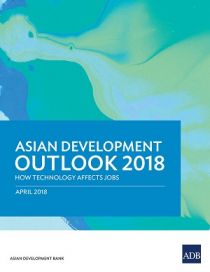Asian Development Outlook 2018: how technology affects jobs
The annual Asian Development Outlook an alyzes economic performance in the past year and offers forecasts for the next 2 years for the 45 economies in Asia and the Pacific that make up developing Asia. Growth prospects in the region are upbeat, buoyed by favorable demand at home and abroad. A strong performance in 2017 reflected a surge in exports, which will likely abate this year and next, and rapidly expanding domestic demand. While the outlook is for steady growth, risks to it are decidedly on the downside: Trade friction could weaken recently deepened trade links, tightening US monetary policy could diminish investment in developing Asia, and rising domestic private debt may hamper growth. New technologies drive higher productivity, the foundation for economic growth, better-paid jobs, and poverty reduction. The latest technologies in robotics and artificial intelligence may threaten some jobs, however, and leave the less-skilled workers behind. To maximize gains in productivity while safeguarding social welfare, governments in developing Asia should protect workers but not preserve particular jobs. Meanwhile, they should facilitate the countervailing forces in new technologies that generate new jobs. Dealing with the downsides of new technology requires synchronized effort on skills development, labor regulation, social protection, and income redistribution.


